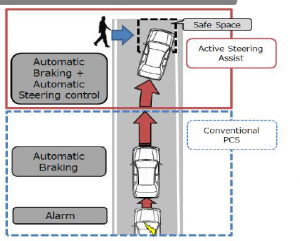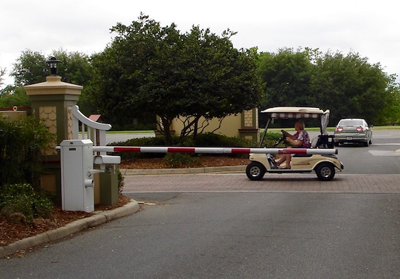Are You Using Your PTV More Often? Market Growth Ahead
Looking forward in 2022 and into 2023 owners of PTVs and prospective owners must be calculating the costs of ownership, including a purchase or possible upgrades, as well as day-to-day running costs. With gasoline prices moving ever higher, that alone suggests a favoring of more intensive use.
Factors driving more intensive use of PTVs
Small Vehicle Resource (SVR) identifies 5 key factors that will drive more intensive use of personal transportation vehicles:
- As noted, the rising cost of using conventional vehicles related to fuel costs, but also to routine maintenance (tires, oil change, lube, brake adjustment, etc.);
- Growing use of PTVs on public roads for quick trips to the grocery store, convenience shop, school, library;
- Clear indications that city and municipal transportation officials are actively considering public road use by small, electric vehicles for both consumer and commercial purposes;
- Increasing sophistication of PTVs themselves, including many current automotive features and a clear path toward more—to include Level 2 autonomous driving components;
- Changing public perception of PTVs from “mere” golf carts to a viable and smart alternative to conventional vehicle use.
Officials grapple with growing use of PTVs
A typical definition and set of rules at the local level can be seen in the following excerpt from a town council meeting in Holmes Beach, Florida:
A vehicle defined as a golf cart in Holmes Beach does not require a license plate. A low-speed vehicle can look like a golf cart, one of the mini-cars rented on the Island or other street-legal, non-traditional vehicles. These have license plates and can be driven in all three Island cities, except that they cannot be legally driven on state roads, including Manatee Avenue and East Bay Drive in Holmes Beach, although the vehicles can cross these streets. Because they are not supposed to be driven on Manatee Avenue, they should not be driven across the Anna Maria Island Bridge.
Note first the distinction between golf carts and low-speed vehicles. The latter need license plates and are actually described, along with other vehicles, as being in a class of “street-legal, non-traditional vehicles.”
Next, the precise roads where LSVs can operate are described, which in this case include “…all three island cities…”, but cannot be driven on state roads, which are named in the discussion. This precise description of what you can and cannot do when driving a PTV is typical of the discussion in hundreds of communities across the country. Such local regulations cover municipal areas usually outside of individual gated communities which are likely to have their own set of rules.
Safety is an on-going concern
In the same council discussion, Holmes Beach Police Chief, Bill Tokajer stated that his concerns about golf carts and low-speed vehicles “…primarily include safety and speed.” He also added, “The slower-moving vehicles on main roads, such as Marina Drive, which has a 35 mph speed limit in some places, can cause issues for car and truck drivers because the lower-speed vehicle slows traffic down.”
Tokajer also worried about LSVs driving in the bicycle lanes to allow cars to pass, but which could result in collisions and injuries to cyclists.
Perhaps the most important thing to note is the multiplicity of vehicles involved, all of which have their advocates and supporters. These complexities are a challenge to city officials attempting to cope with the situation.
The next big upgrade
While the current LSV models have passive safety components (seat belts, turn signals, front and back lights, etc.), which are required for certification, the next improvement in safety will be proactive devices such as front end collision warnings and avoidance (automatic braking), lane correction, and blind spot warning.
Level Autonomy Illustrated
 The illustration to the left indicates how Level 2 autonomy works. The key feature of this degree of autonomy is that sensory devices which pick up the presence of obstacles (e.g. another vehicle or a pedestrian) translate the electronic signals generated by the sensory device into commands that result in a physical reaction without the intervention of the driver.
The illustration to the left indicates how Level 2 autonomy works. The key feature of this degree of autonomy is that sensory devices which pick up the presence of obstacles (e.g. another vehicle or a pedestrian) translate the electronic signals generated by the sensory device into commands that result in a physical reaction without the intervention of the driver.
A step back from Level 2 would be to simply generate warning signals, which the driver would then take appropriate steps to avoid a collision or hitting a pedestrian. Most current model conventional automobiles have such features.
What’s next for the PTV/LSV market?
Given the increasing sophistication of golf car-type vehicles in terms of comfort, style, and performance, plus with new added proactive safety systems, the market for these vehicles is very likely be welcomed by consumers. More and more consumers for their part, have come to look at personal transportation vehicles as a desirable alternative to the conventional automobile in short-distance point A to point B mobility.
Other things equal, such conditions would suggest rapid growth of the market over he next 3-5 years and beyond. By the end of the decade it would not be unduly optimistic to see close to a million units come to market. Things are rarely equal, however, and the current period, end of the first quarter of 2022, is witness to crucial uncertainties, none of which carry the promise of early resolution.
Uncertainties abound
The uncertainties are familiar to most, whether they be consumers or manufacturers:
- Supply chain bottlenecks;
- Rising energy prices;
- Record inflation;
- War in Ukraine with the threat of a global conflict.
These issues, the outcomes of which at this time are quite unpredictable, cloud the forecast. The following assumptions are reasonable, however, if hardly assured:
- Bottlenecks in the supply chain begin to ease as port congestion lets up and alternative domestic sources become available;
- Energy prices will rise somewhat more but stabilize;
- As a result of the above and restrictive monetary policy undertaken by the Federal Reserve, inflation will decline to the range of 2%-3% for the rest of 2022 and into 2023;
- The Fed’s restrictive monetary policy, while reducing inflation, will also negatively impact the economy’s growth to 1%-2.5% in real terms over the next 18 months.
Summary of Economic Outlook
- Supply chain problems to lessen;
- Energy prices stabilizing;
- Inflation, as measured by the Consumer Price Index, will decline to a range of 2%-3%;
- GDP in real terms will show slow growth in the term from 1%-2.5%
Outlook for golf car-type vehicles
Of the three segments covered in the SVR industry report—fleet golf cars, personal transportation vehicles, and light duty utility vehicles, the personal transportation (PTVs/LSVs) will be the most important in terms of revenue share.
There is already a great deal of unmet demand for PTVs which manufacturers and imports must meet and fulfill. This alone would add 6%-7% of growth over 2021. Over and above this, the growing popularity of PTVs as an alternative to conventional on road automobiles should add another 5%-6% of growth to the market. High single-digit growth over the next four or five years after 2022 is a strong possibility.
The market becomes more competitive
The market in coming years will see much greater competition. It will no longer be dominated by the Big Three—Club Car, E-Z-GO, Yamaha—but will see strong competition from the likes of StarEV, ICON, and Evolution. And these are no longer cheap knock-offs of Big Three models, but rather quite sophisticated, stylish vehicles. Tomberlin, more identified as a U.S.-based company is also aggressively building its market share.
The evidence of growing competition is very clear: In 2021, imports of golf car-type vehicles, 90%+ from China more than doubled to over 60,000 units, according to U.S. Department of Commerce trade figures.
The bottom line is that consumers will have more product to choose from at competitive prices. Always a good thing.
Contact the Author: Steve Metzger at smetzger@smallvehicleresource.com. Or check out our website at www.smallvehicleresource.com, where you will find an extensive database of vehicle models and can make side-by-side comparisons of vehicles based on a full set of specifications.


